
Easy Japanese Coffee Jelly
If you like coffee, then you‘ll love my easy recipe for chilled Japanese Coffee Jelly. You only need 4 ingredients to make this classic treat to cool down on a hot summer day. Top it with fresh whipped cream and sweetened condensed milk for a touch of silky richness.
Ingredients
- 2½ cups strong-brewed coffee (or substitute 2½ cups (600 ml) water and 2 Tbsp instant coffee powder/crystals; see the instructions for when to add the instant powder)
- 1 stick packet kanten (agar) powder (2 tsp, 4 g; see the end notes to substitute kanten bar, powdered gelatin, or agar powder)
- ⅓ cup sugar
For Serving
- 3 Tbsp sweetened condensed milk (skip for vegan/vegetarian)
- 3 Tbsp milk (skip for vegan/vegetarian)
- toppings of your choice (optional; whipped cream, coffee beans, and mint leaves)
Instructions
- Before You Start: Please note that this recipe requires a chilling time of 5 hours. Now, gather all the ingredients.
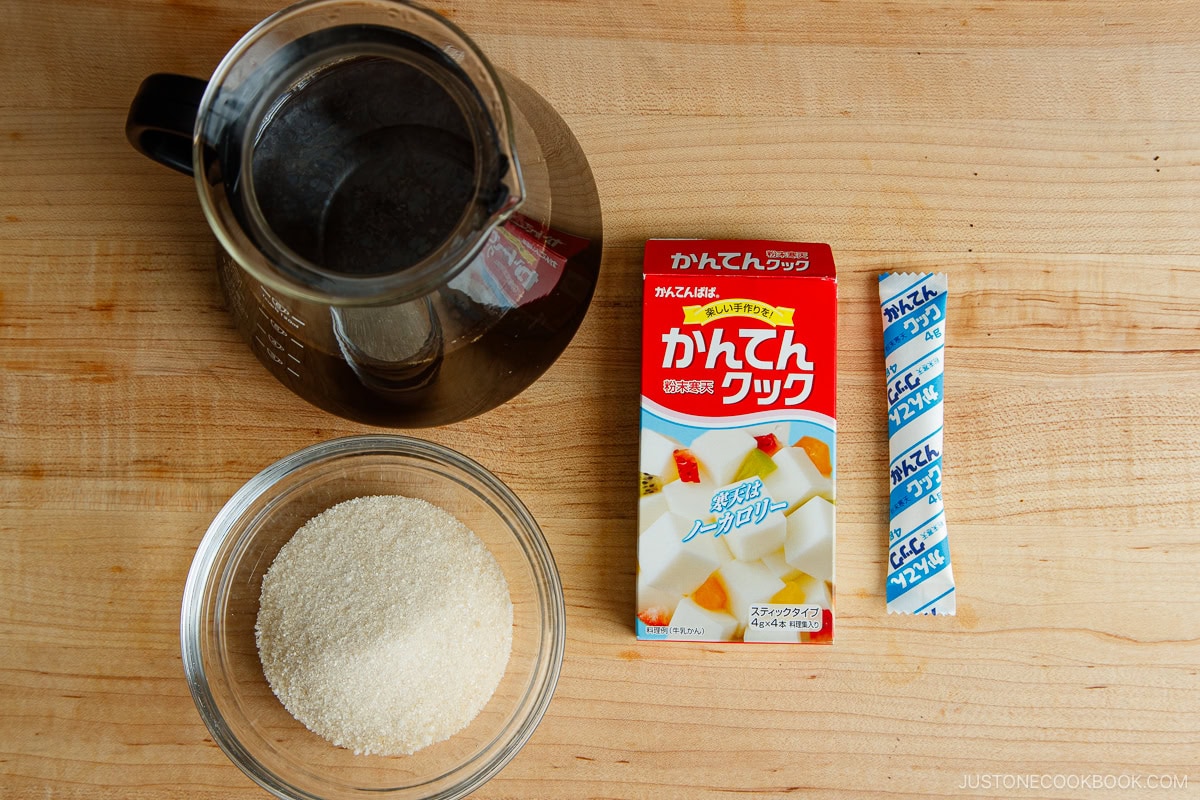
- In a small saucepan, add 2½ cups strong-brewed coffee. (To use instant coffee powder or crystals, add 2½ cups water now, but wait until Step 4 to add the instant powder). Then, add 1 stick packet kanten (agar) powder.
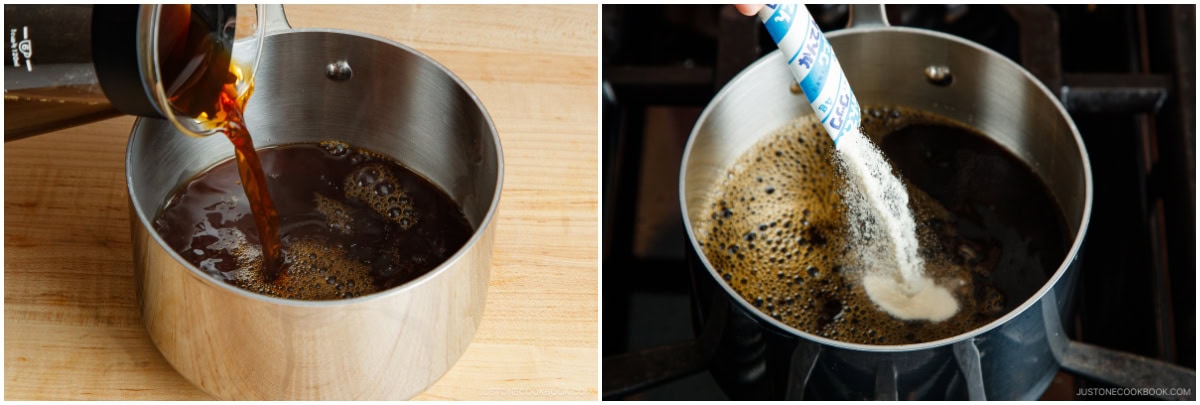
- Whisk well and bring the mixture to a gentle boil over medium-high heat. Once boiling, reduce the heat to low and cook for 2 minutes, continuously whisking the mixture. Tip: Kanten powder is hard to see, but be sure to dissolve it completely at this stage. If you don‘t, the mixture will not solidify. Learn more about kanten in the end Notes.
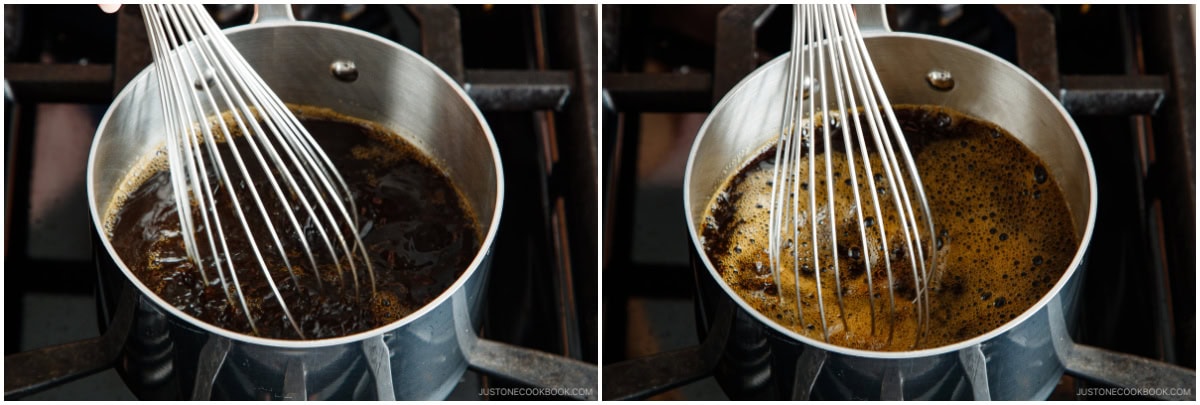
- Turn off the heat. Add ⅓ cup sugar (and 2 Tbsp instant coffee powder, if using). Whisk until the sugar has dissolved.
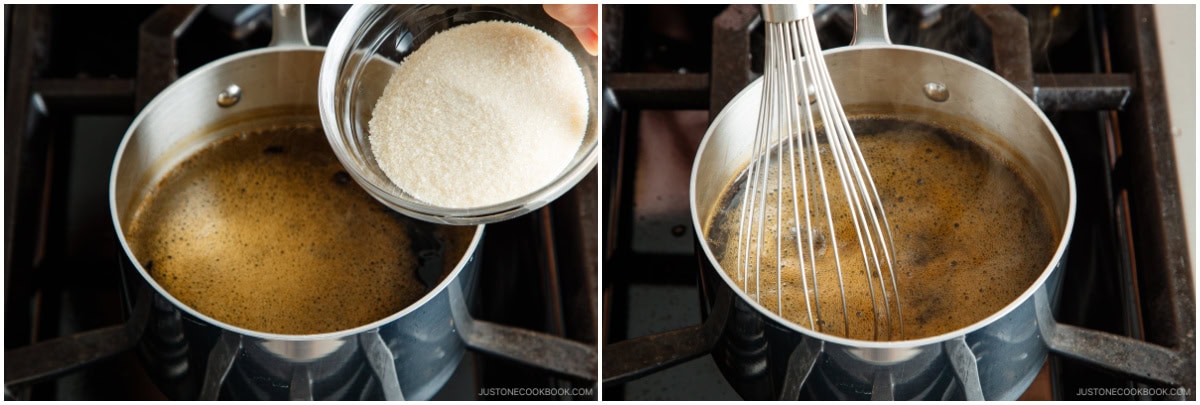
- Run a square or rectangular mold (I used a nagashikan that is 15 x 14 cm or about 6 x 5½ inches) under running tap water so the jelly doesn‘t stick. Shake off the excess water, but do not wipe it dry. Pour the hot mixture into the mold. Tip: If you don‘t have a nagashikan, you could use a baking pan or dish that is 8 x 8 inches (20 x 20 cm). It will create a flatter, single layer of jelly. Another serving option: To serve the jelly (without cutting) in individual glassware, let the hot mixture cool for 5 minutes, then pour it into the glass serving dishes.
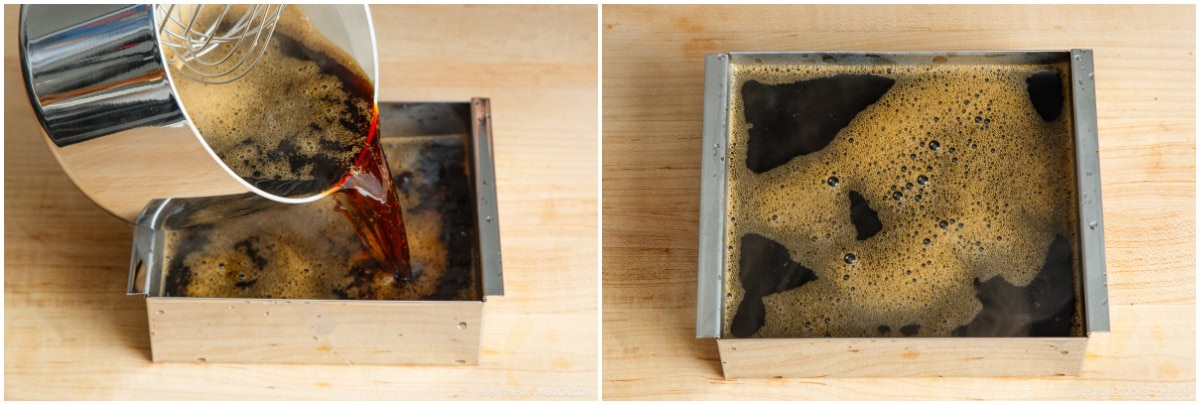
- Remove the bubbles on the surface by quickly touching them with the flame from a butane torch (also called a kitchen torch) or a long-stemmed utility/candle lighter. You also could scoop them off with a spoon or pop them with a toothpick, but those are both time-consuming methods. Once the bubbles disappear, let the mixture cool to room temperature on the countertop and solidify (about 45–60 minutes). The jelly will set before it reaches room temperature.
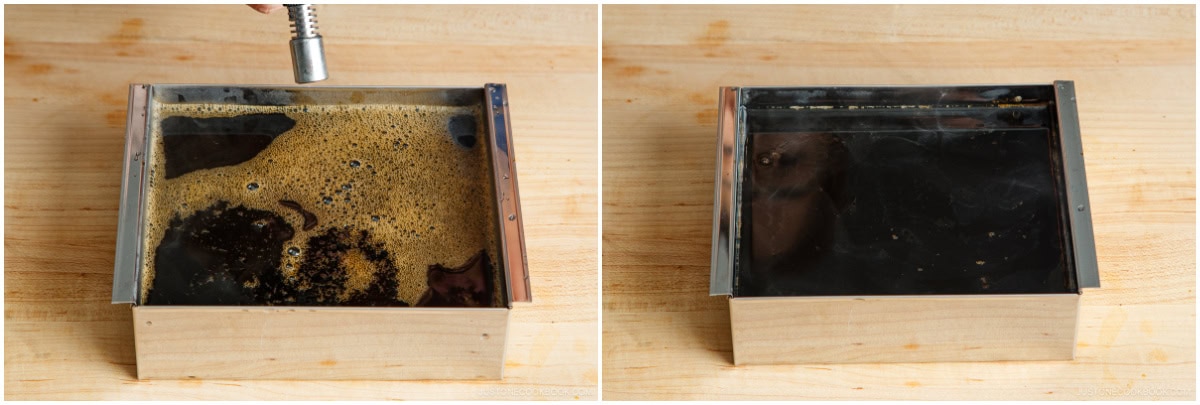
- Once the coffee jelly cools down, cover it with a paper towel and plastic (or a silicone lid) and refrigerate for 4–5 hours. Tip: The paper towel absorbs condensation.
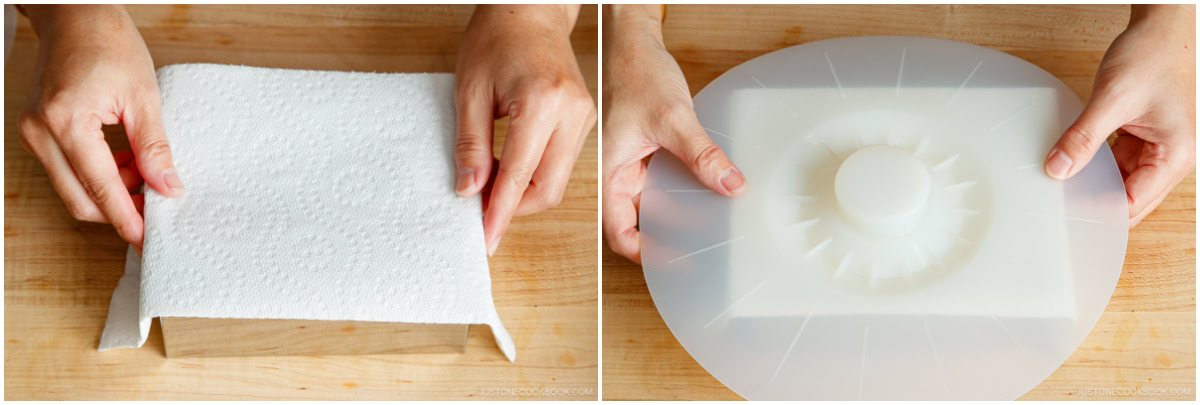
To Make the Topping
- Coffee jelly tastes great with a sweetened condensed milk topping. To make it, combine 3 Tbsp sweetened condensed milk and 3 Tbsp milk and mix well. Adjust the consistency and sweetness based on your preference. Add more sweetened condensed milk for a sweeter, thicker mixture.
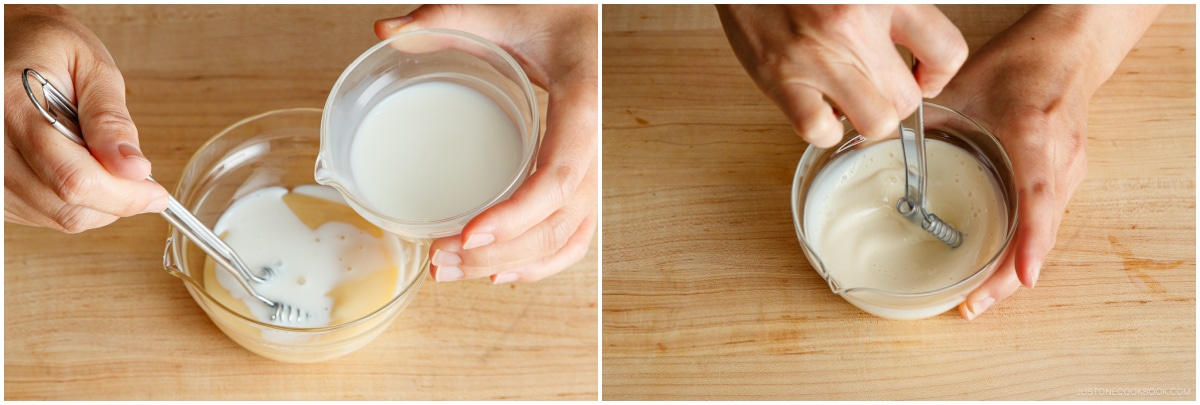
To Serve
- Take out the nagashikan or pan from the refrigerator. Run a knife along the edges of the jelly. Then, lift the inner tray from the nagashikan.
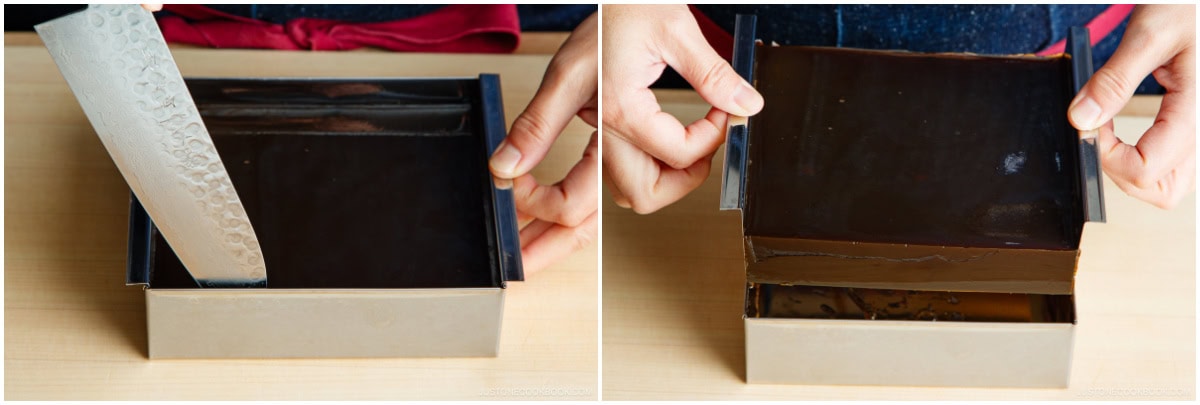
- Slide the jelly from the inner tray (or invert the pan to release the jelly) onto a cutting board. Cut into ½-inch (1.3-cm) cubes.
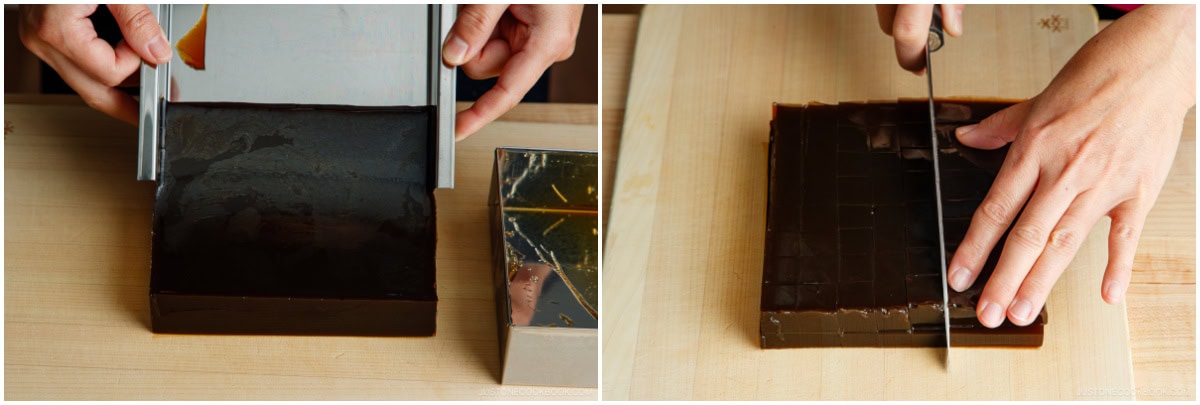
- Transfer the cubed jelly to individual serving dishes. If you poured and chilled the jelly in individual glass dishes, take them out of the refrigerator now. Serve with the toppings of your choice. I like to add whipped cream, mint, and a coffee bean on top. Drizzle with the sweetened condensed milk topping. Enjoy!
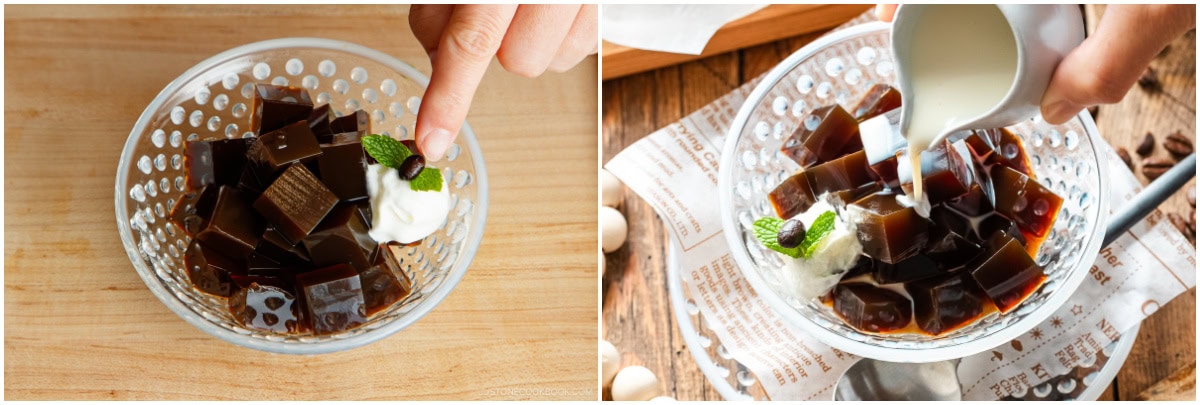
To Store
- You can keep the coffee jelly in the refrigerator for up to 2 days.
Notes
More about kanten: Kanten needs to be heated to dissolve properly. It sets in about an hour at room temperature. The powdered form of kanten is easiest to measure and use; bars and flakes should be soaked in water first.
To use a kanten bar: Rinse the bar of kanten carefully and break it into pieces, then soak in water for 30 minutes. This will help it dissolve faster. Squeeze the water out from the pieces and they are ready to use.
How much kanten to use: For this recipe, I added an extra 100 ml of water to achieve a softer texture than standard kanten jelly.
To set 2 cups (500 ml) of liquid for standard kanten jelly, use:
- kanten powder: 1 stick packet (4 g, 2 tsp)
- kanten bar: 1 bar (8 g)
- kanten threads: 24 threads (8 g)
- For a soft-set jelly (Japanese style) that you eat with a spoon, substitute 4 tsp or 8 g powdered gelatin or agar powder for 2 tsp or 4 g (1 stick) of kanten powder. You could also use 8 g (~4.5 sheets) gelatin leaves/sheets. Use more gelatin for a harder set, if you prefer.
- Kanten, gelatin, and agar (also called agar-agar) each produce slightly different jelly textures. Gelatin produces a soft and wobbly jelly; it's too soft to cut into cubes, so serve it with a spoon.
- Test first to see if the gelatin or agar powder sets, as each brand is different.
- Gelatin won't set if you heat it too long or boil it. Follow the package instructions for how to bloom and dissolve the gelatin.
- Agar is a broad term used outside Japan to translate the word kanten; the Japanese consider agar-agar and kanten different ingredients because they come from different algae.
Nutrition
Calories: 67kcal, Carbohydrates: 17g, Protein: 1g, Fat: 1g, Saturated Fat: 1g, Polyunsaturated Fat: 1g, Sodium: 3mg, Potassium: 89mg, Fiber: 1g, Sugar: 15g, Calcium: 25mg, Iron: 1mg